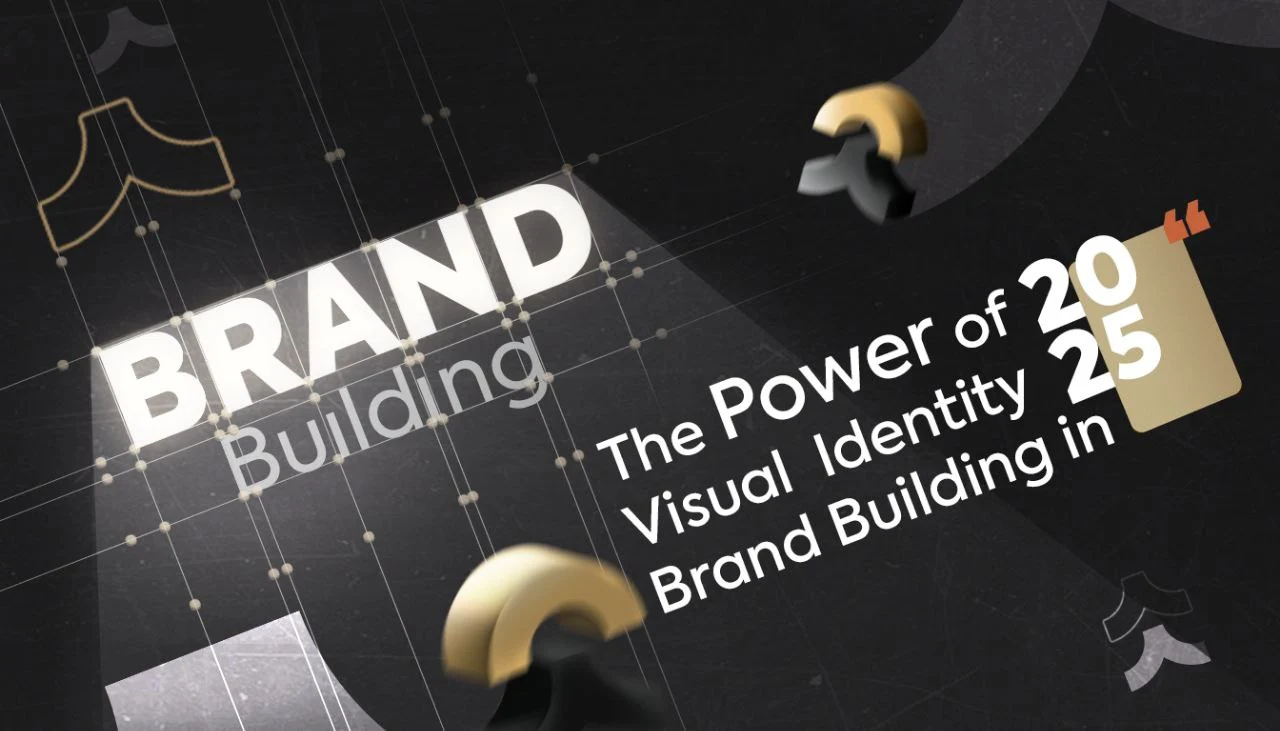
Two decades ago, the power of visual identity was often reduced to a polished logo and a neatly printed business card. Companies believed that a set of colors and a stylish typeface were enough to convey personality and leave a lasting impression. Back then, competition moved at a slower pace, markets were less crowded, and a brand could thrive for years with an almost unchanged identity.
But the world has changed. Today, in 2025, visual identity is no longer just a static set of elements on paper or a screen; it’s a living, adaptive system that evolves and interacts with audiences at every touchpoint. In a marketing landscape overflowing with content and rapid innovation, it’s no longer enough for a brand to be seen; it must be remembered.
This is where brand-building 2025 strategies come into play, focusing on cohesive, flexible design systems that forge genuine emotional connections and deliver a consistent experience across all platforms. A powerful visual identity doesn’t happen by chance; it’s the product of intentional creative work, rooted in strategic thinking, attention to detail, and a deep understanding of the audience. In this article, we’ll explore how the concept of visual identity has evolved and share practical brand identity tips for creating a brand that not only stands out but also endures over time.Visual identity refers to the collection of visual elements that represent and differentiate a brand. These elements, including the logo, typography, color palette, imagery style, and layout, work together to communicate a brand’s personality and values. Nowadays, visual identity design goes beyond aesthetics. It involves creating adaptable systems that remain consistent across multiple platforms, from mobile screens and printed packaging to immersive digital experiences like AR ( Augmented Reality) and VR (Virtual Reality). This adaptability ensures that the brand remains relevant in an environment where consumer expectations shift quickly.
The power of visual identity is essential for brand building in 2025 because:
Invest in a Brand Style Guide: Document rules for logo usage, color codes, typography, and imagery to maintain consistency.
Test Your Identity in Multiple Contexts: Ensure it works on both digital and physical mediums.
Prioritize Accessibility: Make designs inclusive by considering diverse audiences and visual impairments.
Update Without Losing Essence: Refresh elements periodically to stay modern while keeping core brand recognition.
Leverage Motion & Interactivity: Use animated logos, interactive elements, and dynamic layouts to engage audiences.
To reach to the power of visual identity that stands the test of time:
Understand Your Audience: Research what resonates visually with your target market.
Align With Brand Strategy: Every design decision should support your brand’s mission and positioning.
Work With Professionals: Collaborate with experienced designers who understand both aesthetics and strategy.
Measure Impact: Track metrics such as brand recall, engagement rates, and customer loyalty to evaluate effectiveness.
In the fast-moving world of brand building 2025, a powerful visual identity is more than just a design asset; it’s a strategic advantage. It shapes how your audience perceives you, builds trust, and ensures your brand stays relevant in an ever-changing market. Every tip and strategy shared in this article is a stepping stone toward creating a brand identity that is not only memorable but also aligned with the highest design and marketing standards of 2025. And the good news is, you don’t have to figure it out on your own.
Our team specializes in crafting visual identities that combine creativity, strategy, and adaptability, ensuring your brand stands out and stays ahead. Get in touch with us today, and let’s build a visual identity that embodies your vision and meets the demands of tomorrow’s market.
Q1: What is the difference between visual identity and brand identity? Visual identity is a subset of brand identity. While brand identity includes all elements that define a brand (values, messaging, voice), visual identity focuses specifically on its visual aspects.
Q2: How often should a brand update its visual identity? Most brands refresh every 5–7 years, but minor updates may be done more frequently to stay relevant.
Q3: Can a small business benefit from a professional visual identity? Absolutely. A consistent and professional visual identity can help small businesses compete with larger brands by building credibility and trust.
Q4: How do you measure the success of a visual identity? Track brand recognition, engagement rates, and customer feedback to assess effectiveness.
Leave a comment